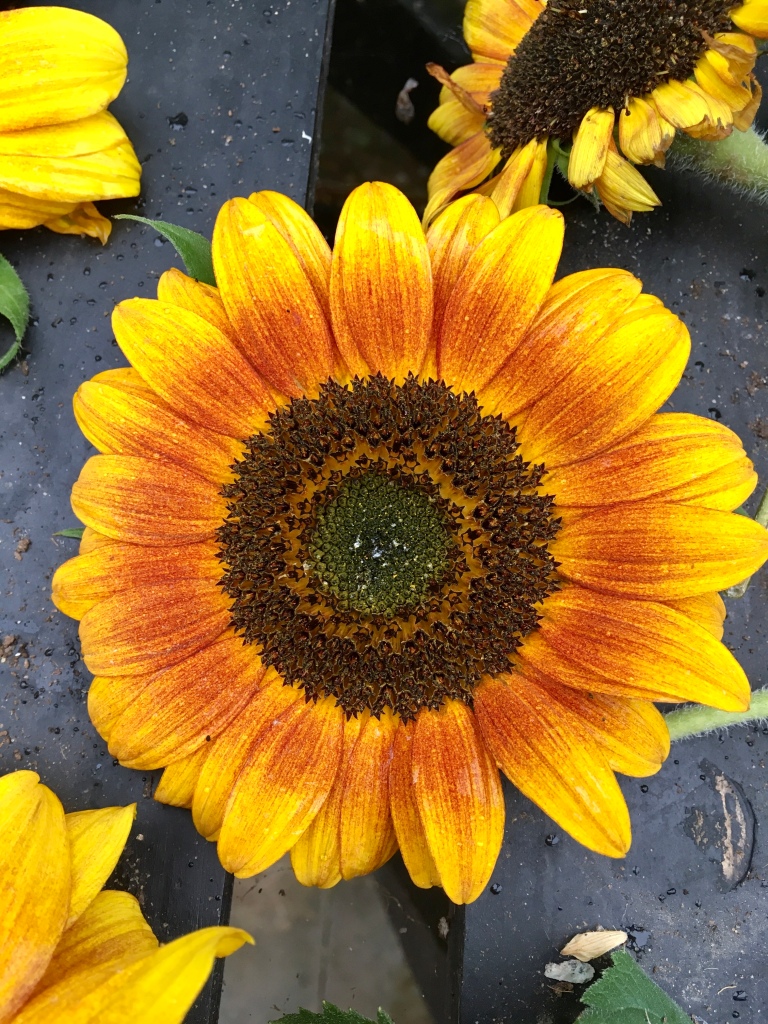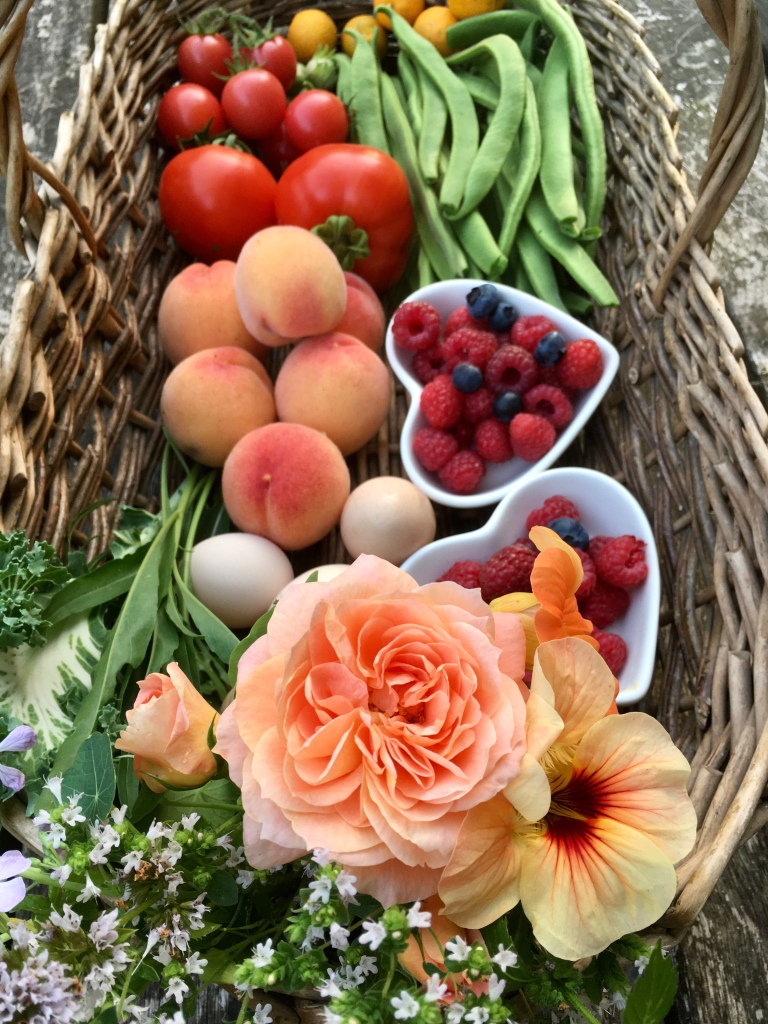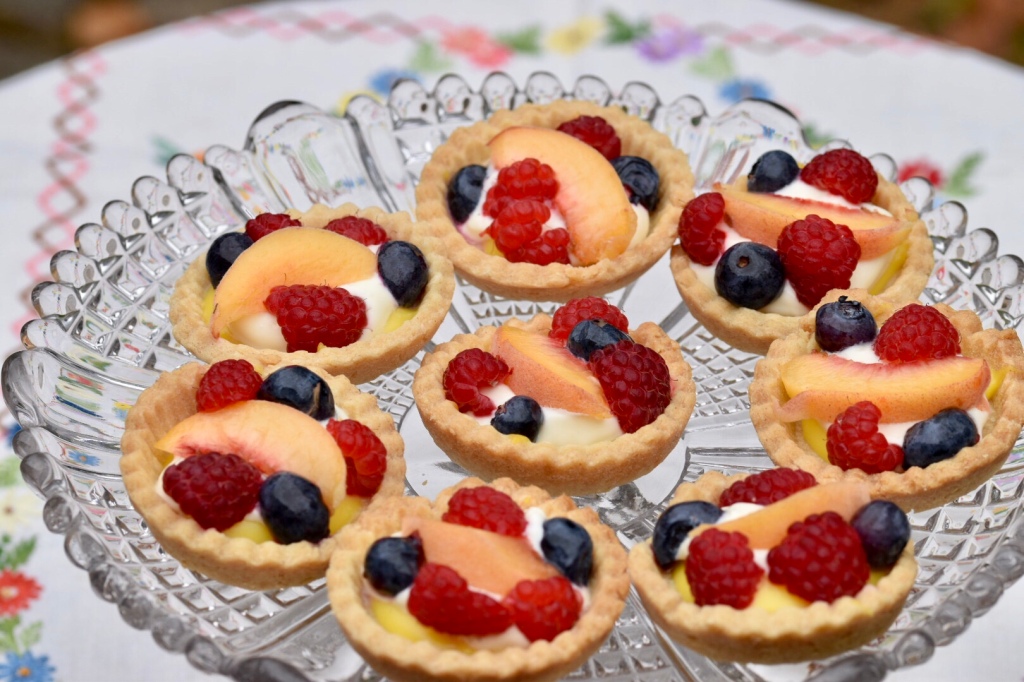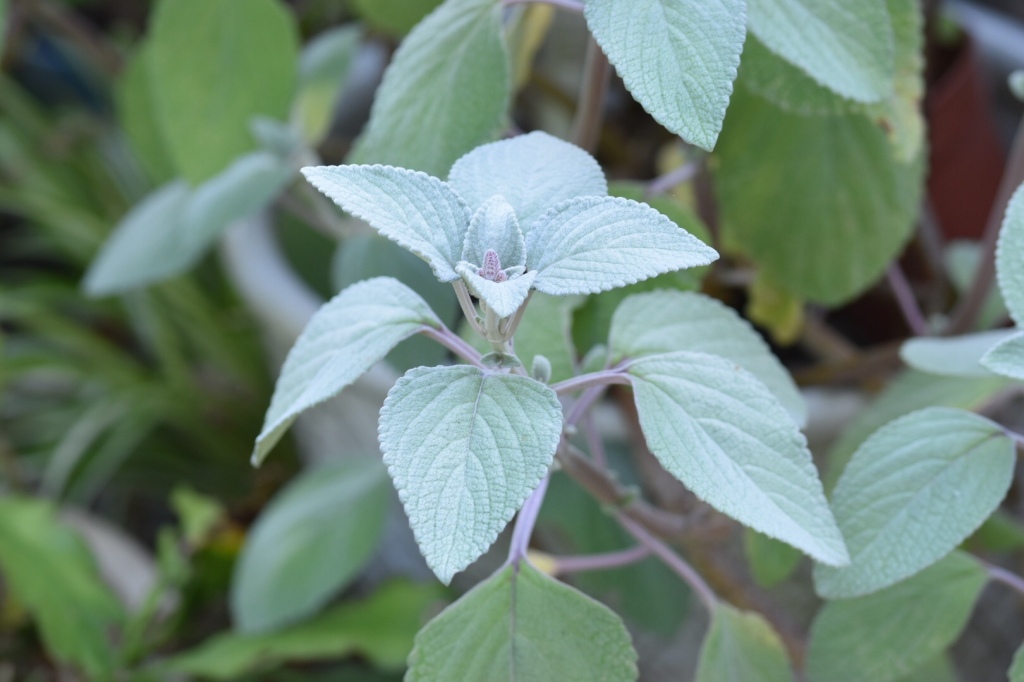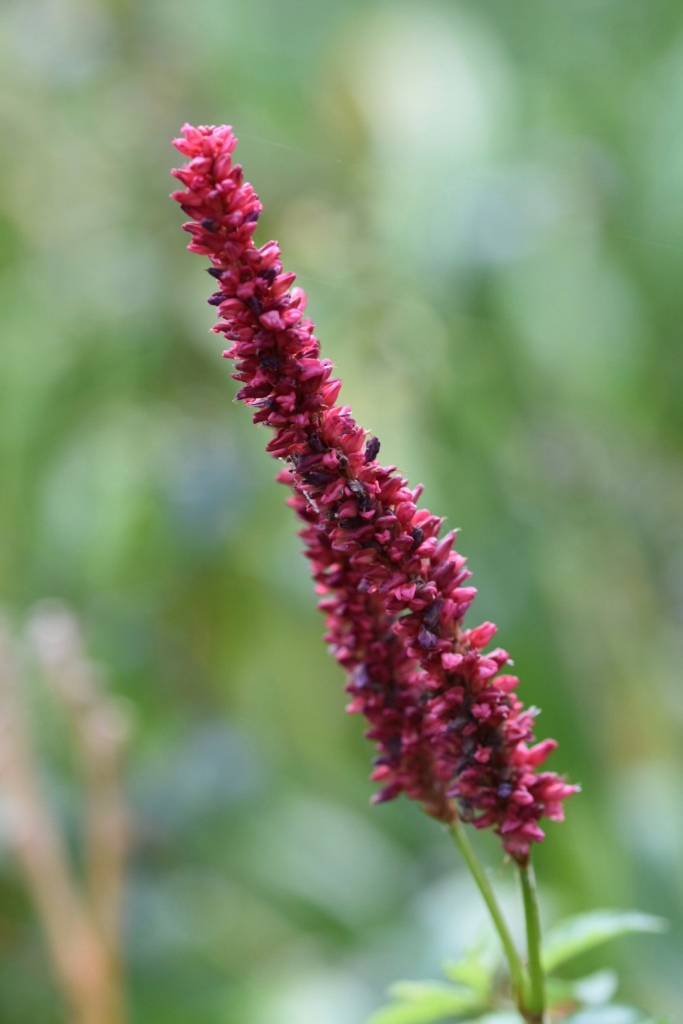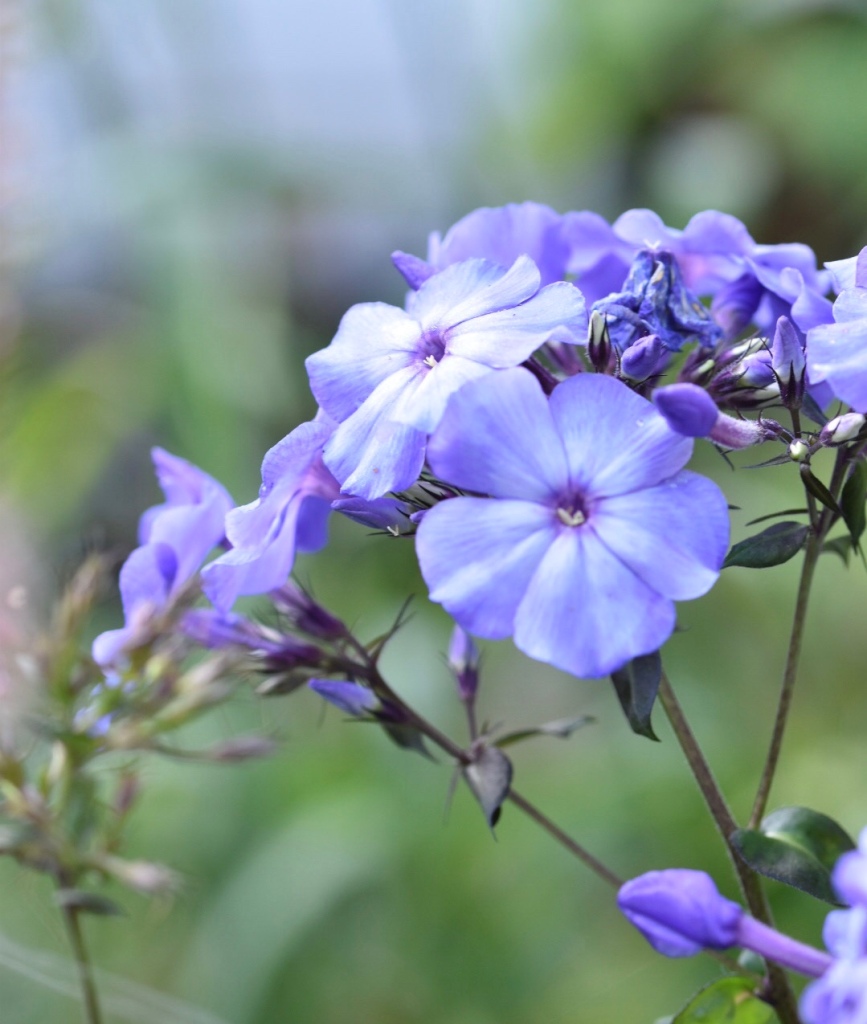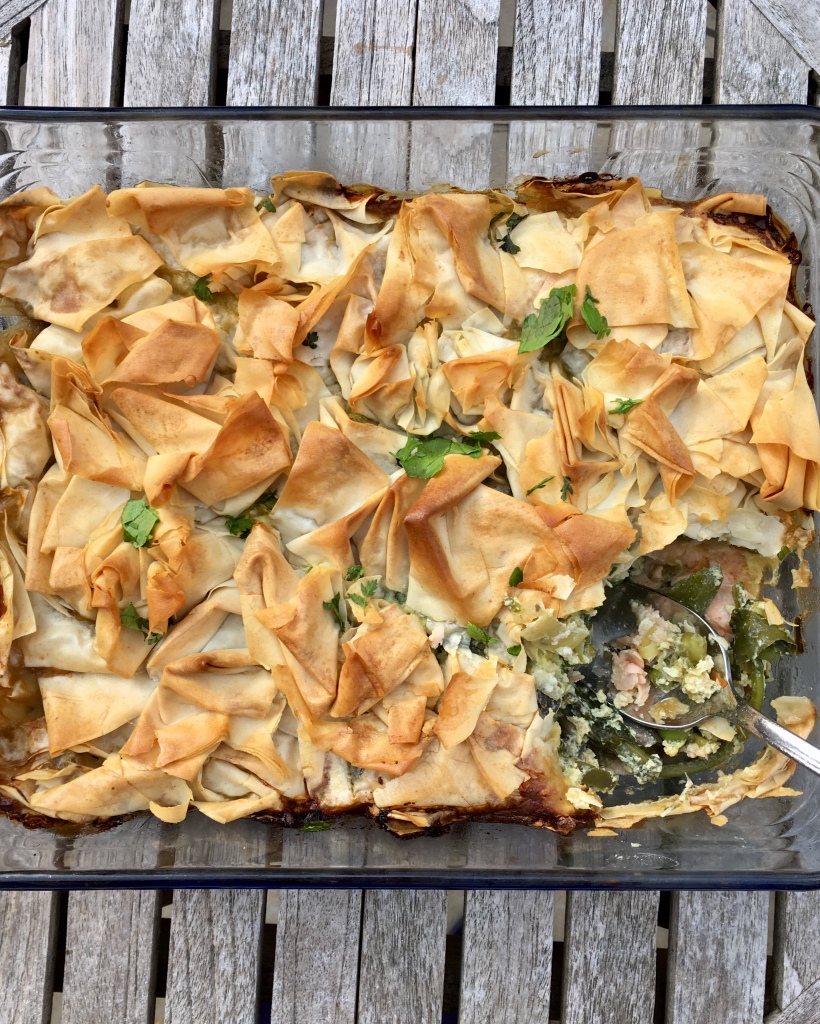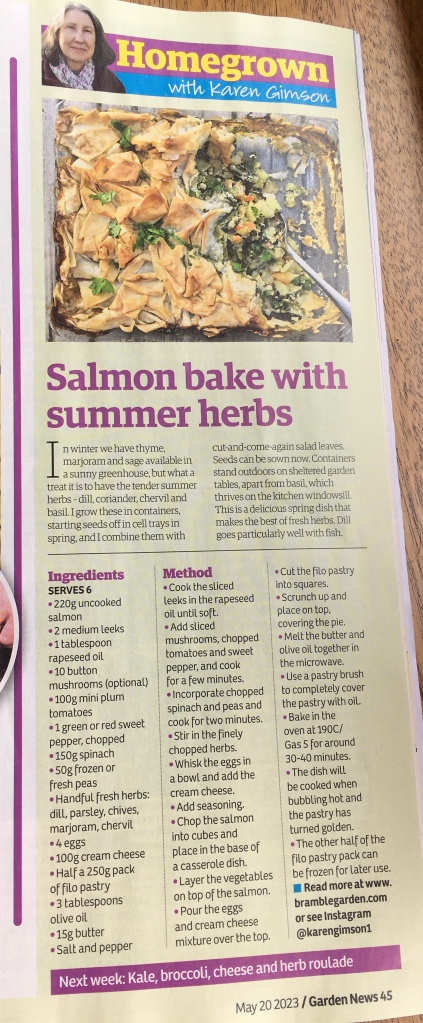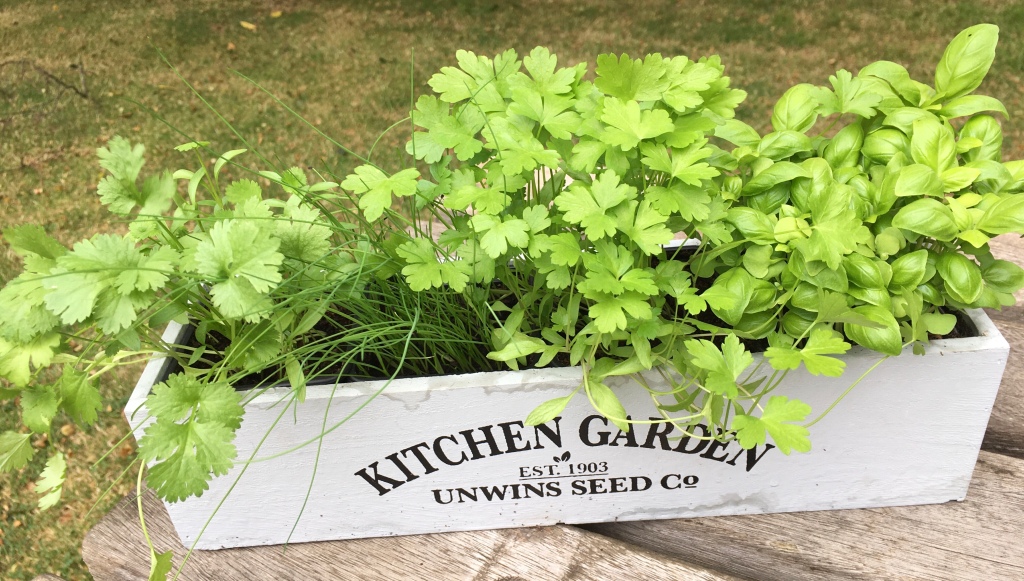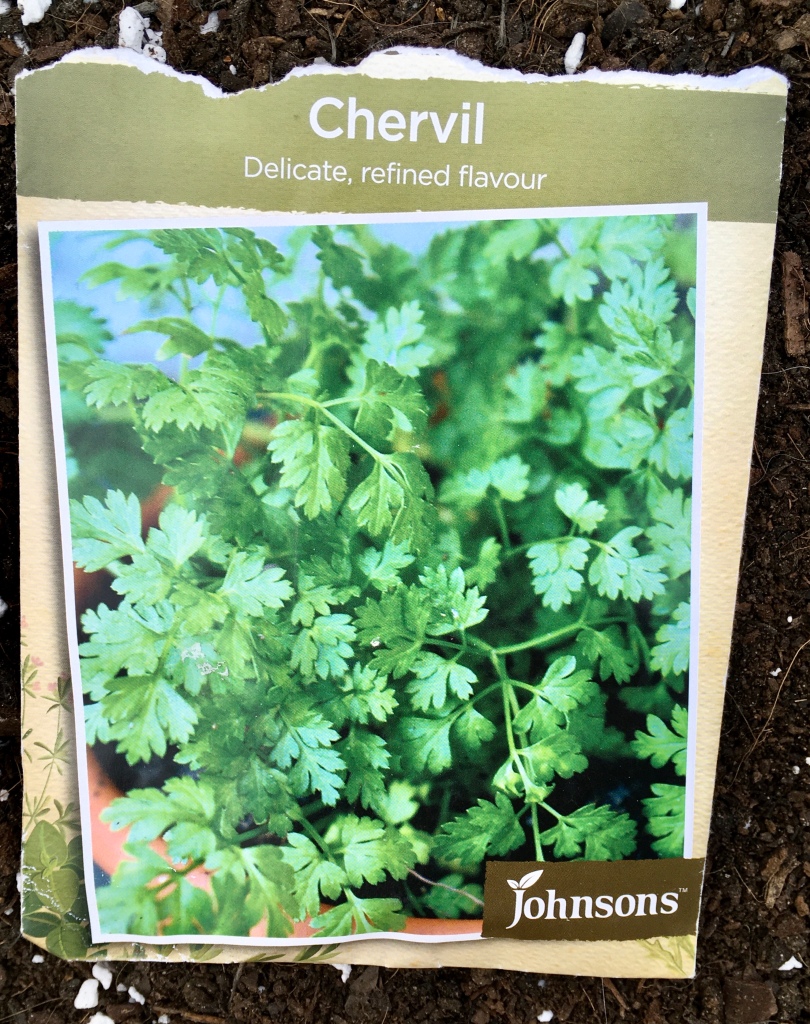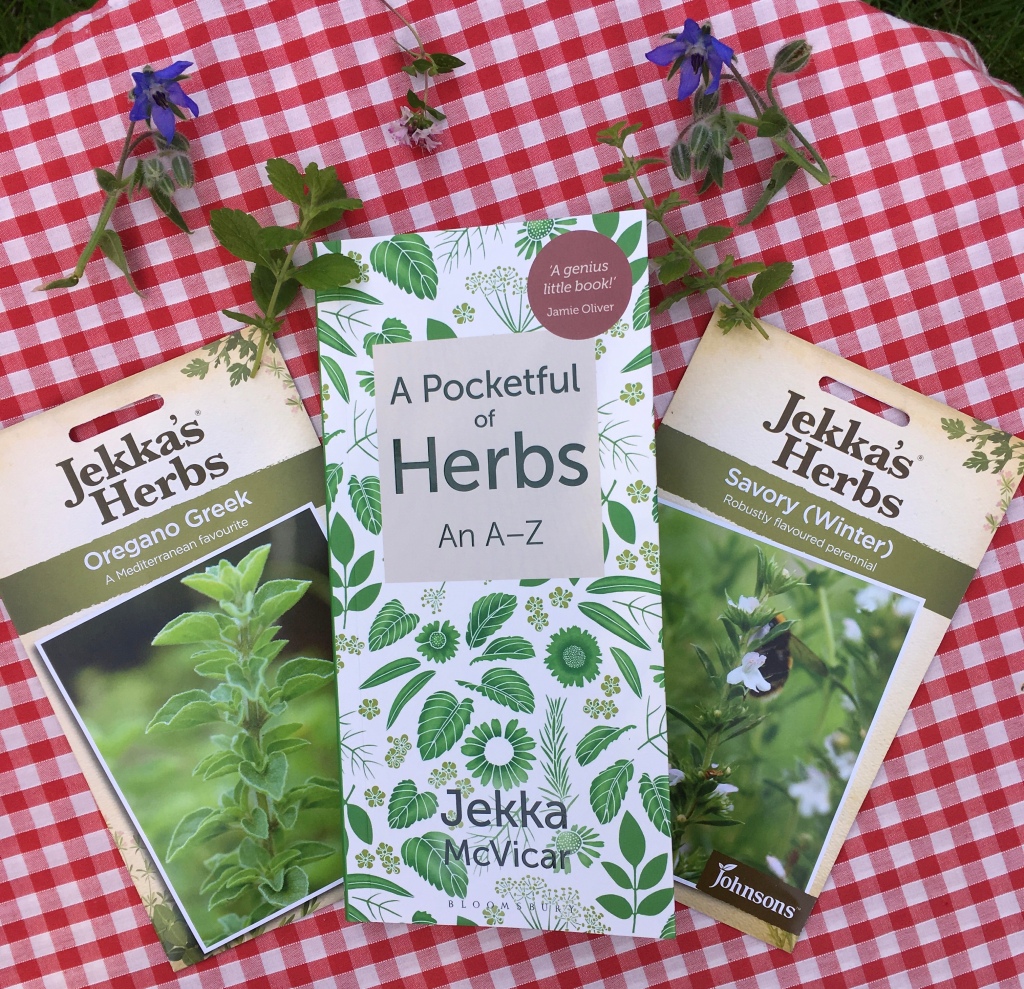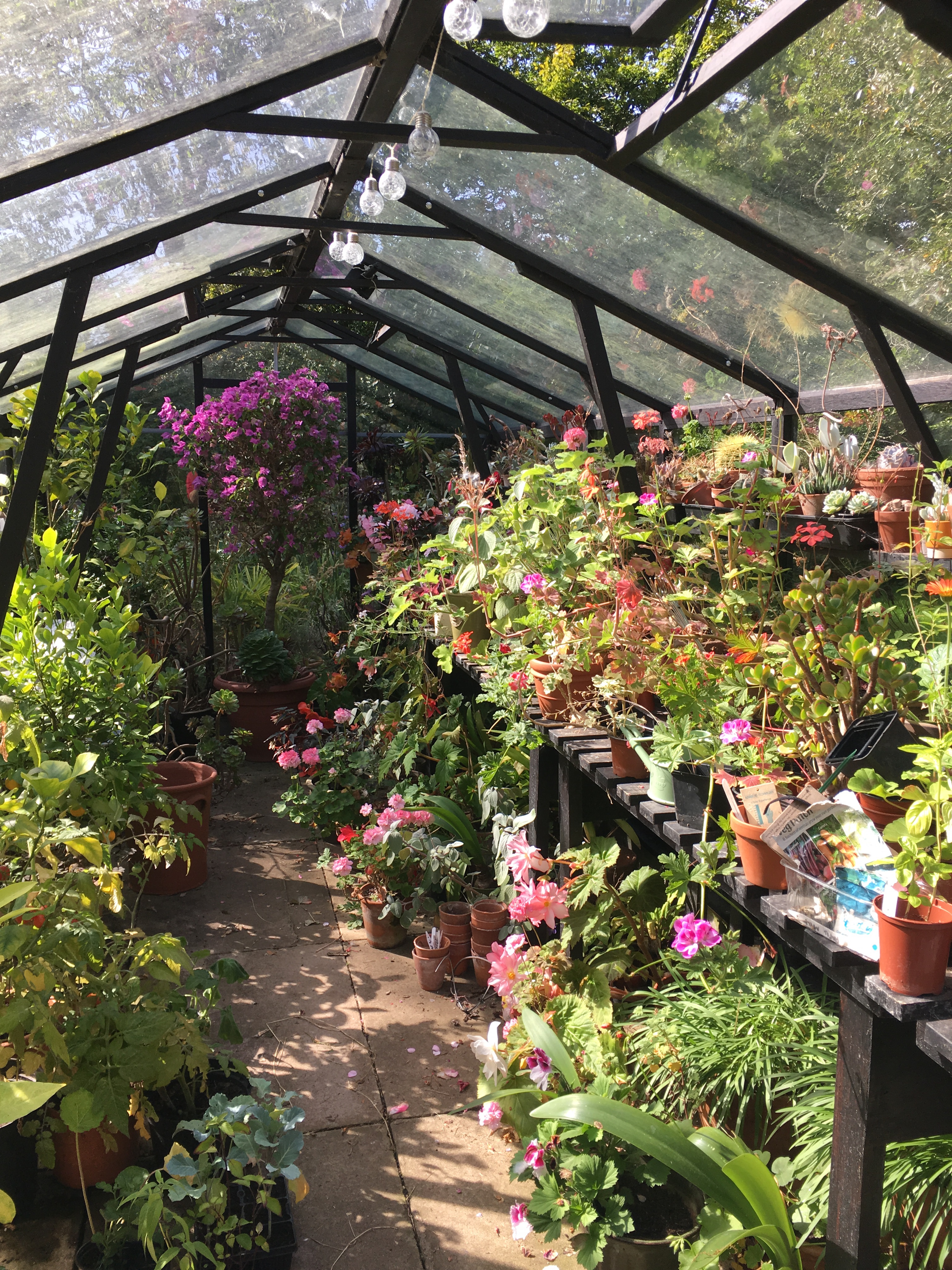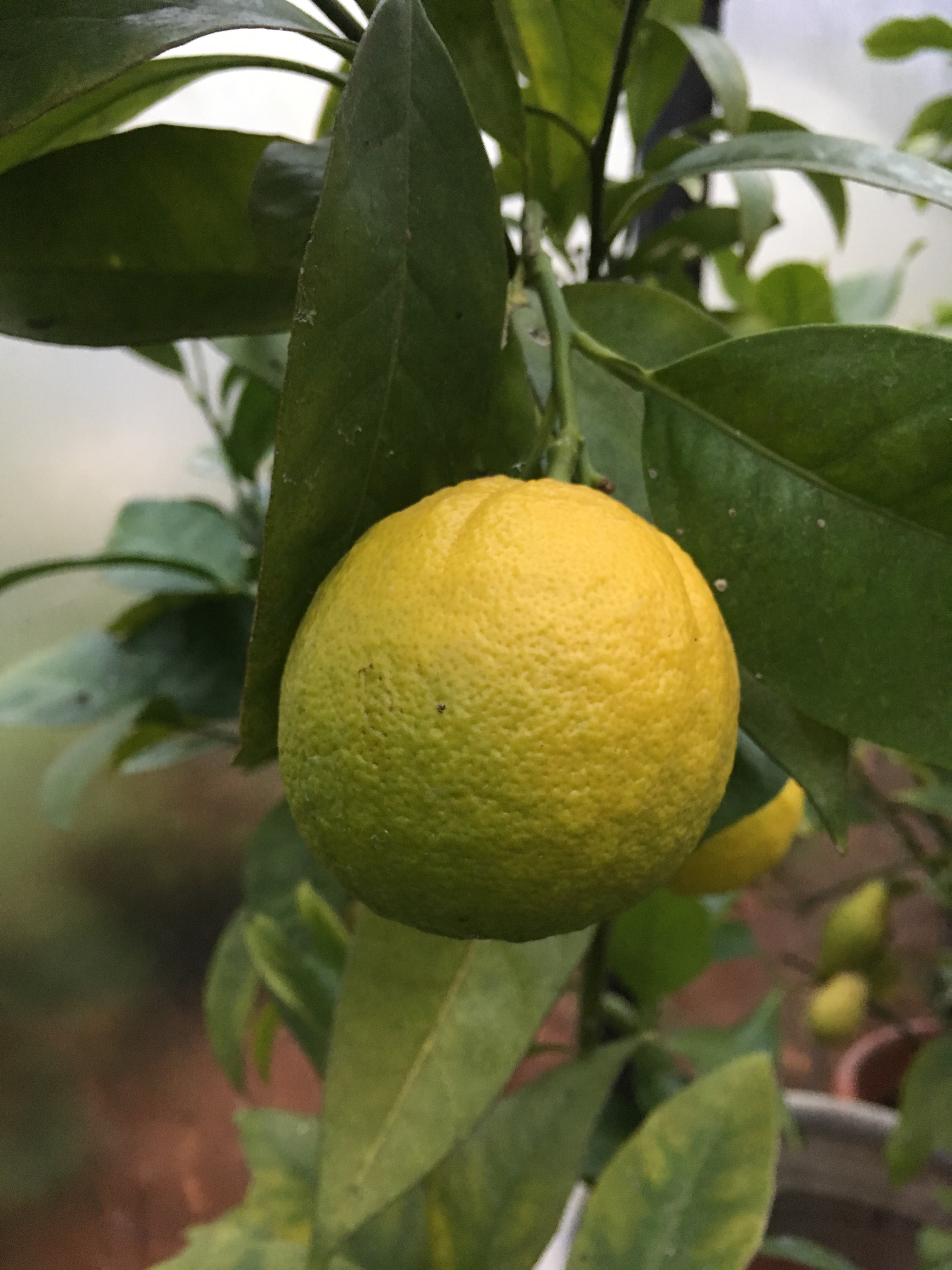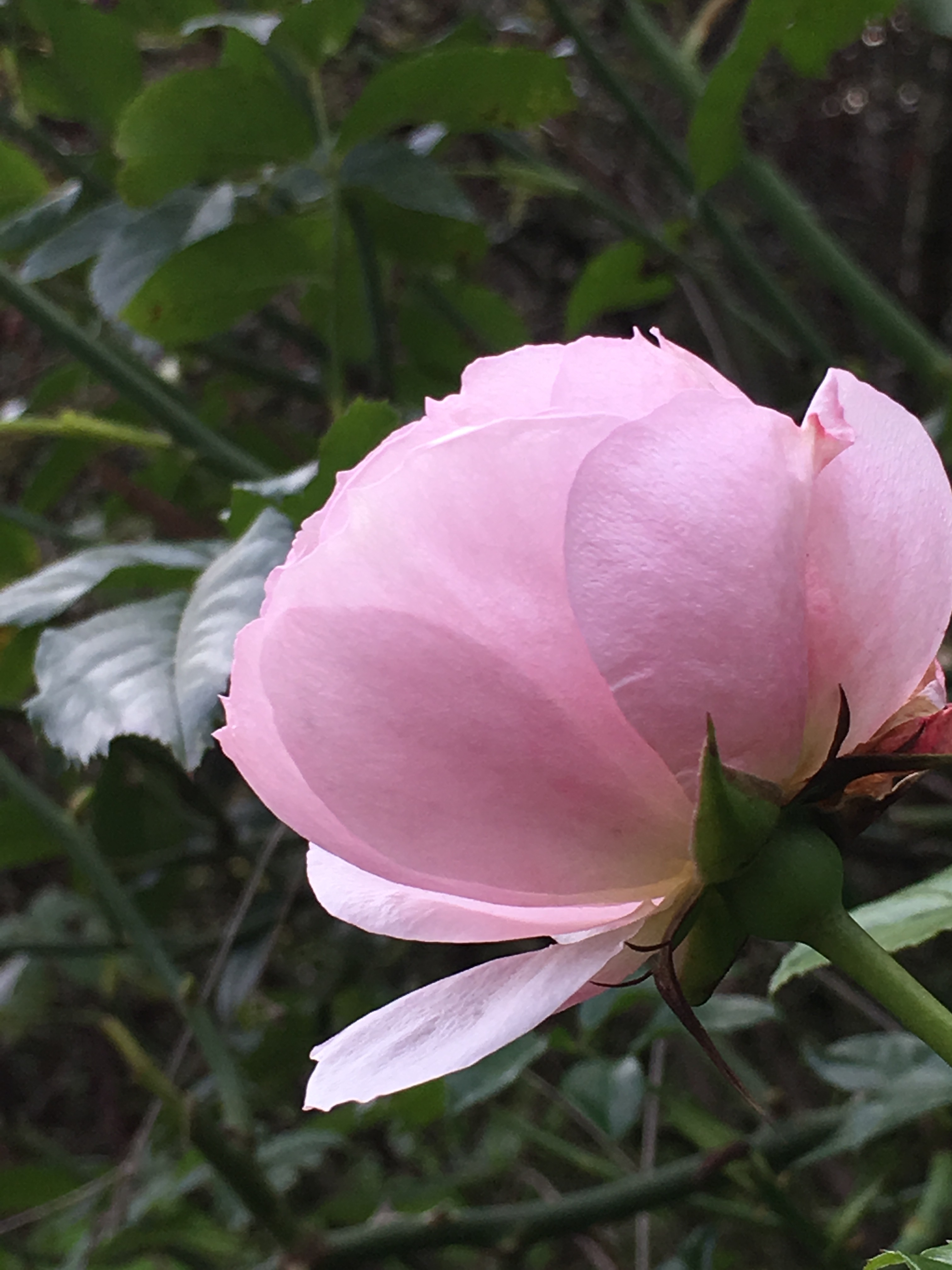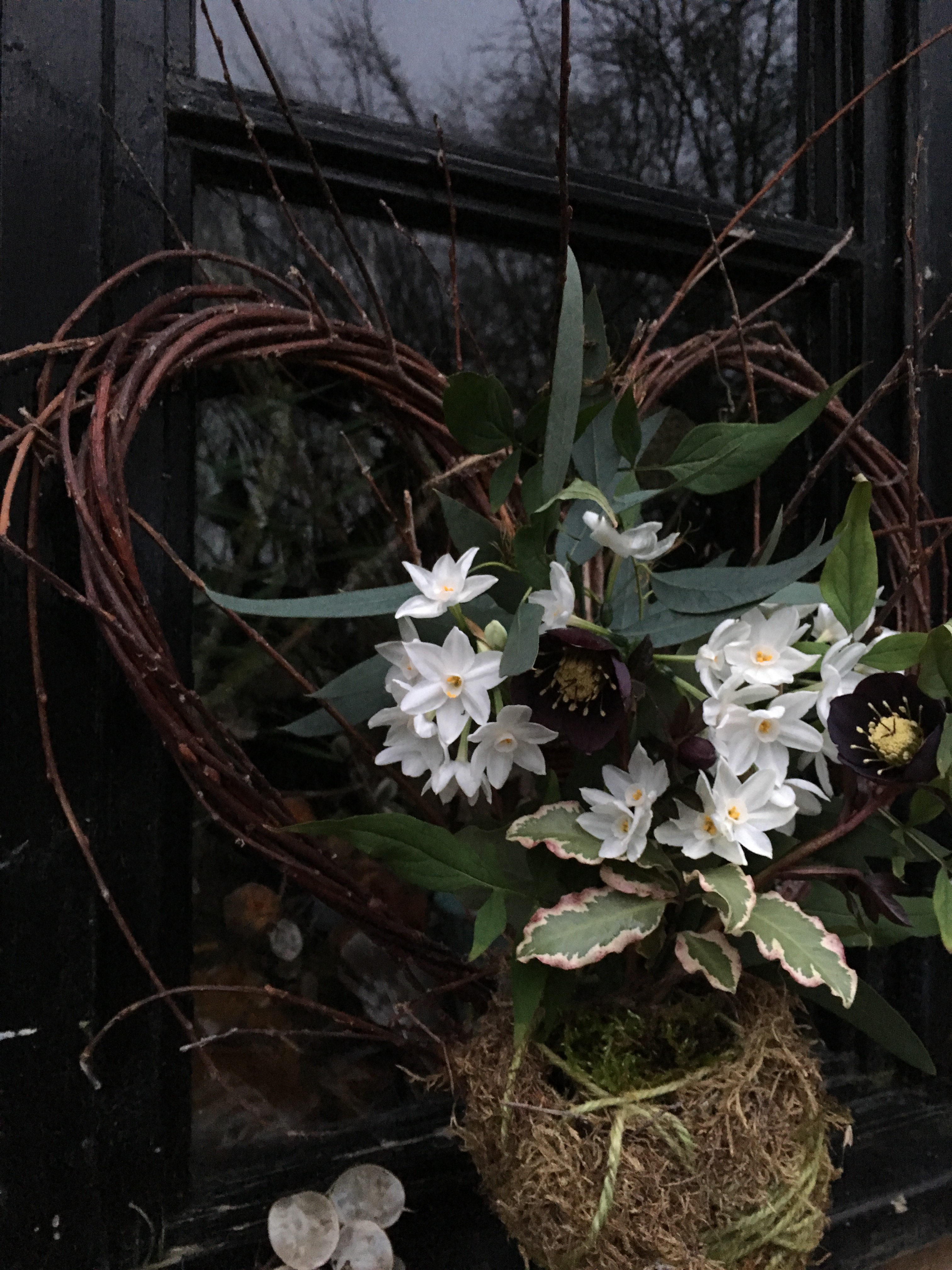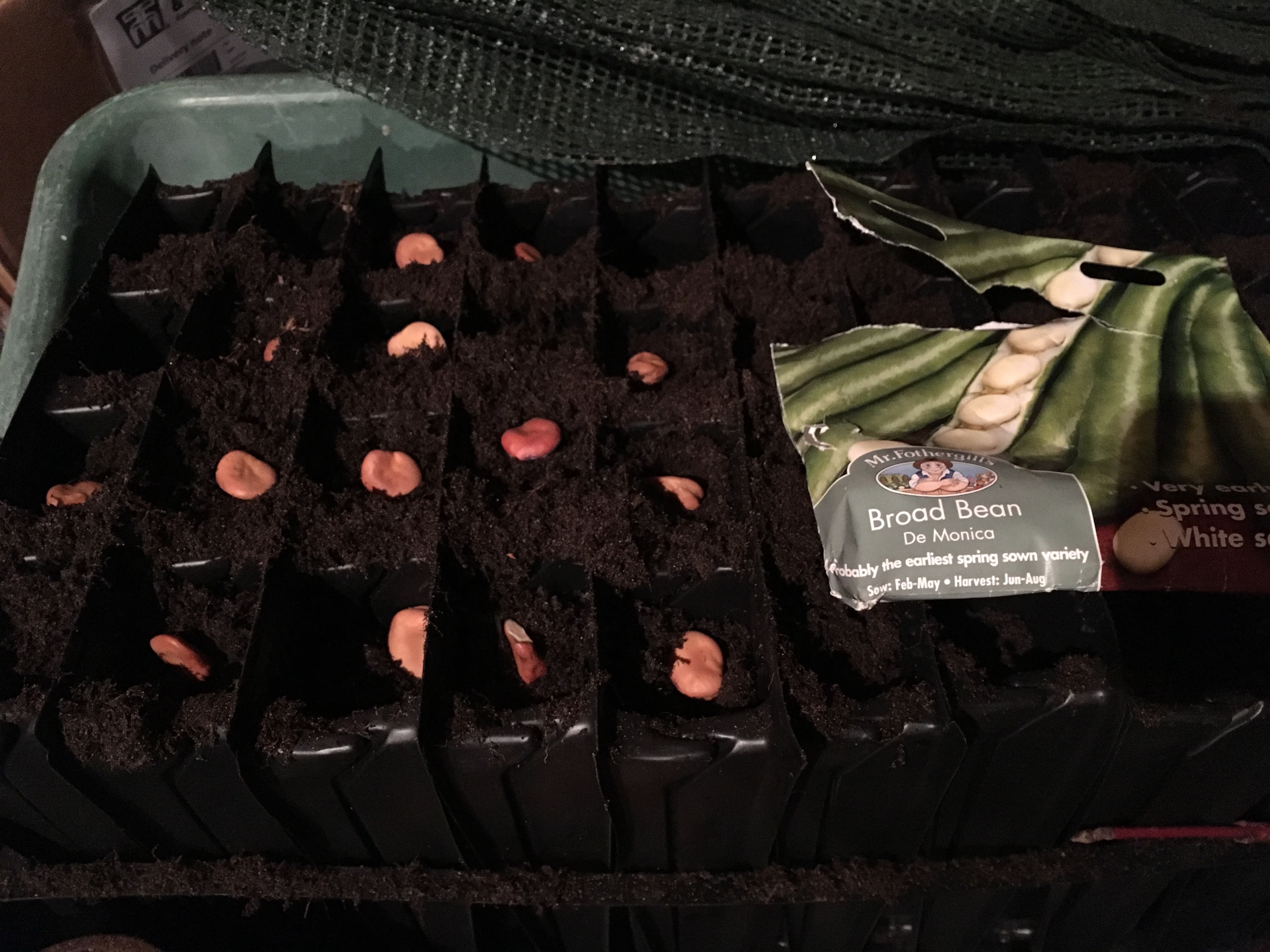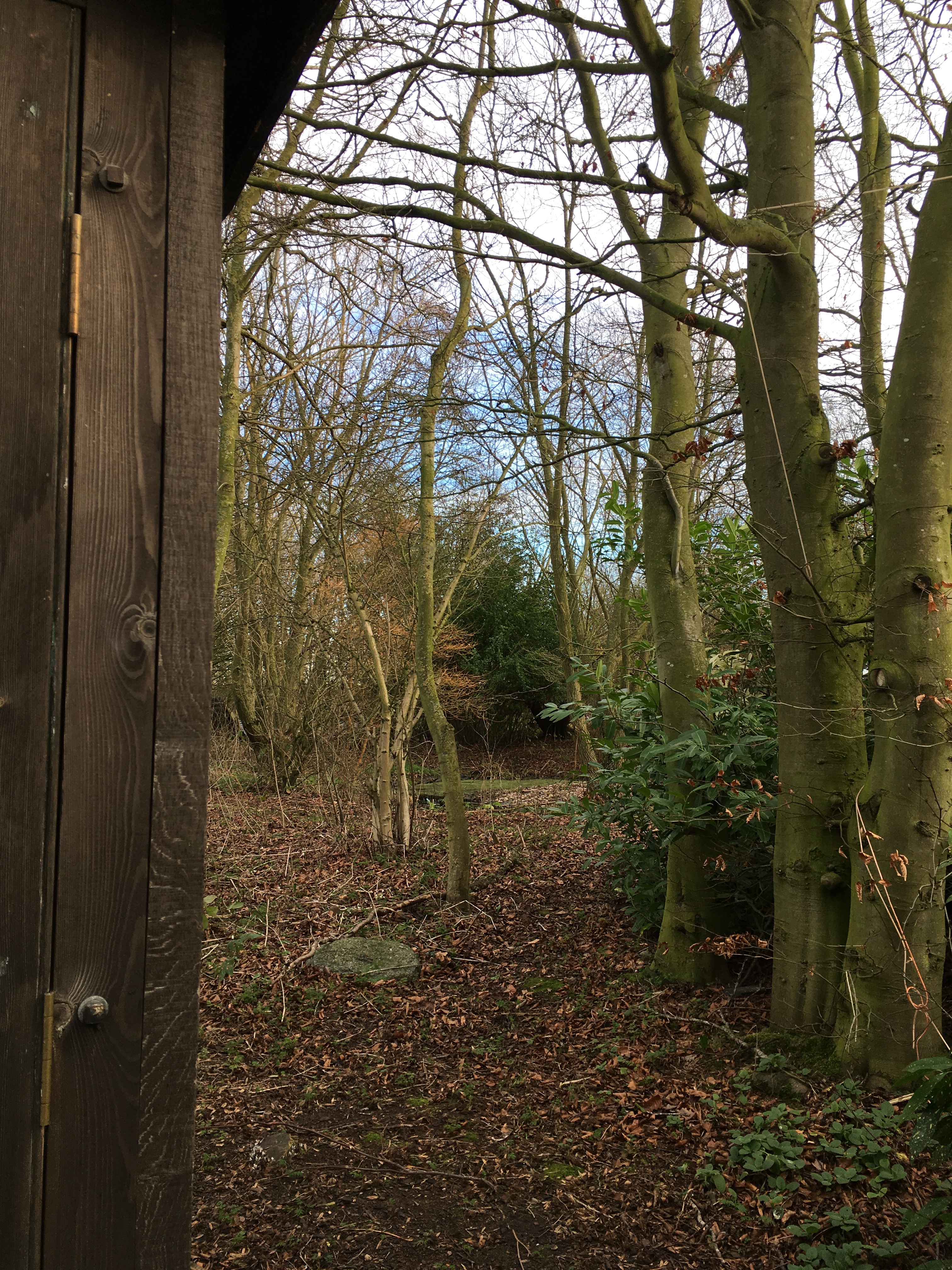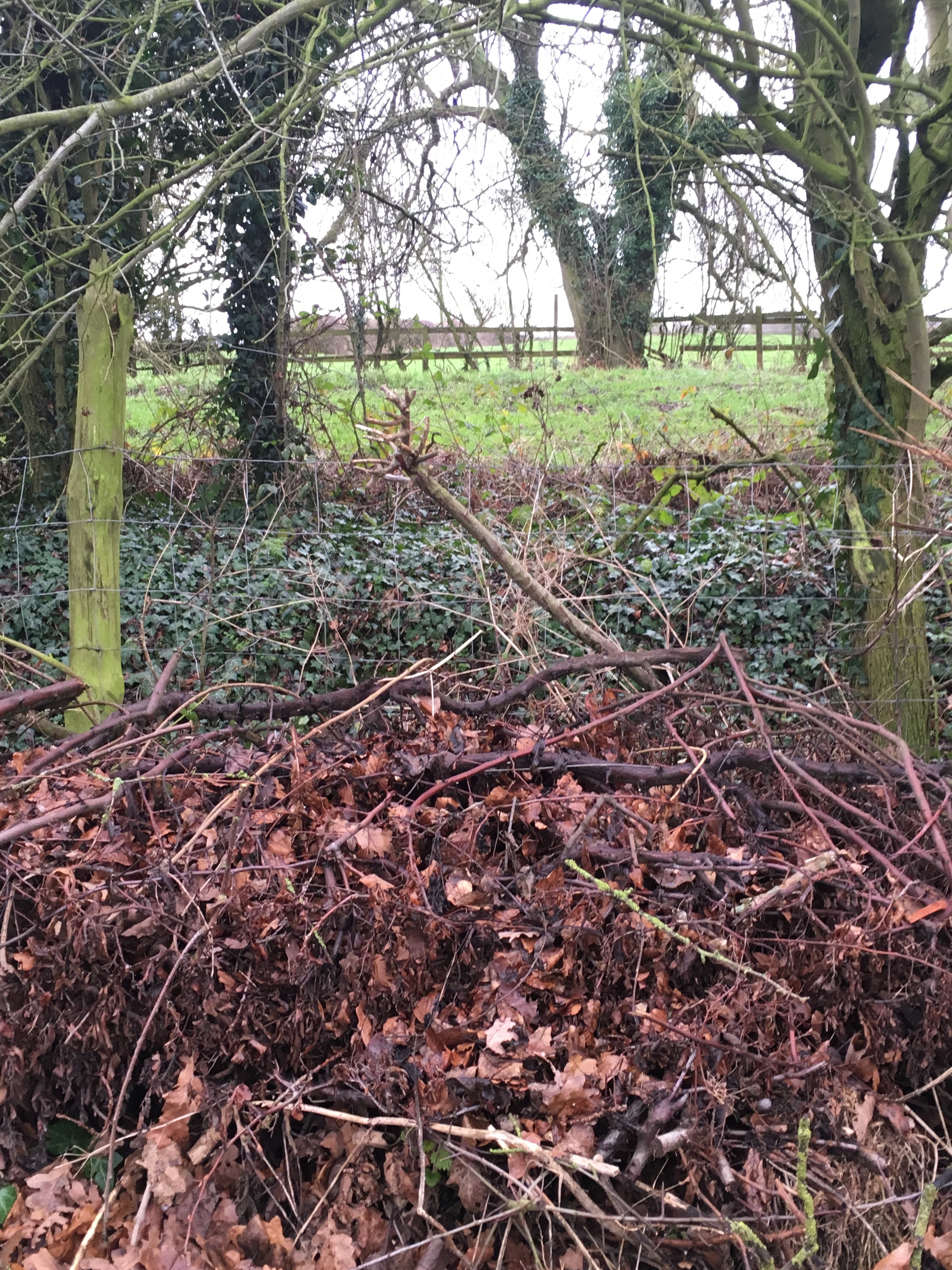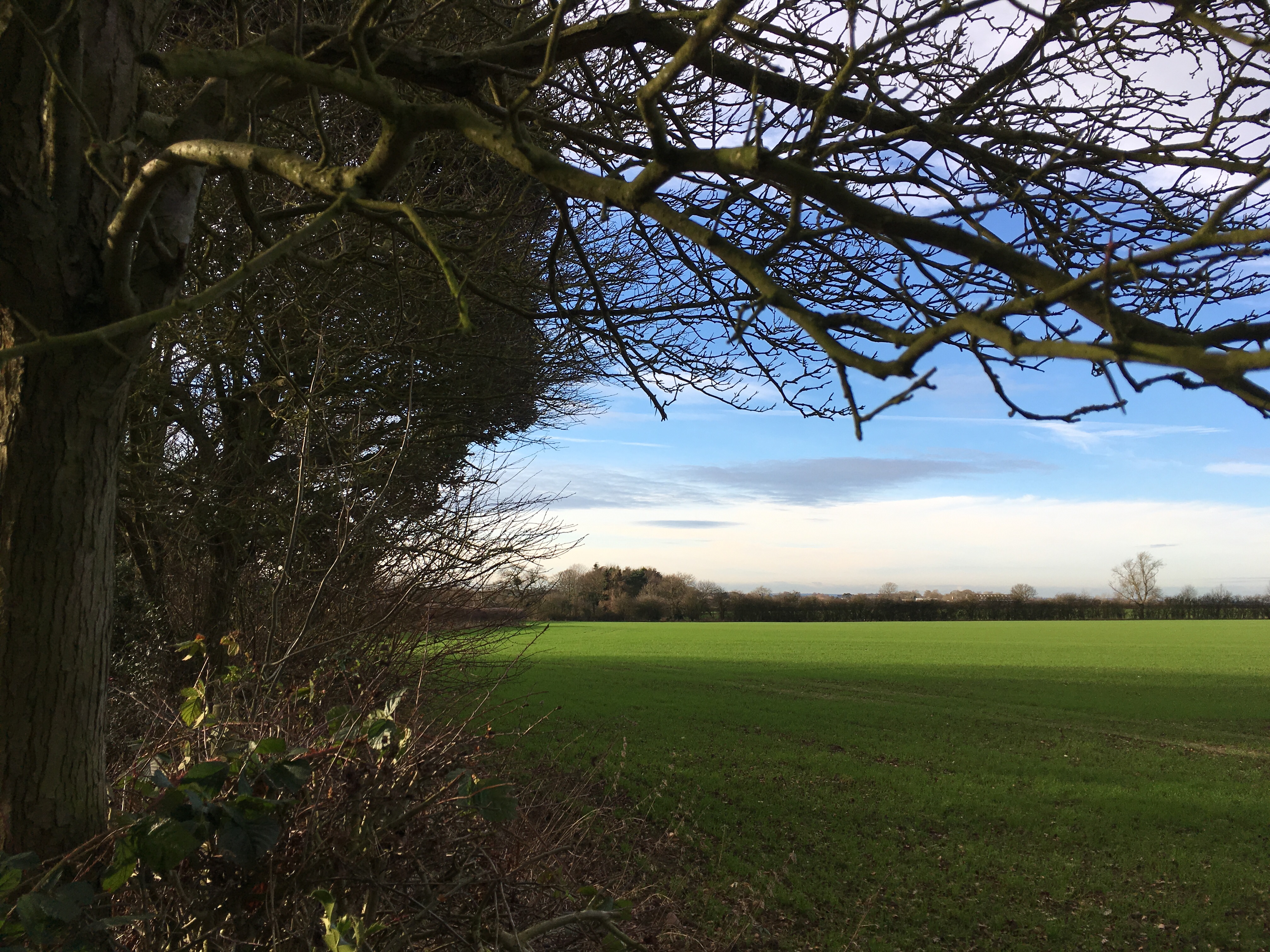
Welcome! I garden on a one acre plot in north Leicestershire. Most of the garden is planted with native trees and shrubs. There’s a small pond, a mini water meadow full of marsh marigolds and lady’s smock, a small vegetable plot, greenhouse and poly tunnel. I grow as many flowers, fruit and veg as I can in containers and small divided beds. I aim to have something to pick from the garden every week of the year. This post is for my mum who can’t easily visit at the moment and the photos give her a flavour of what the garden looks like today. You are welcome to join me on a slow stroll around the plot as I seek out anything cheerful at this time of the year!
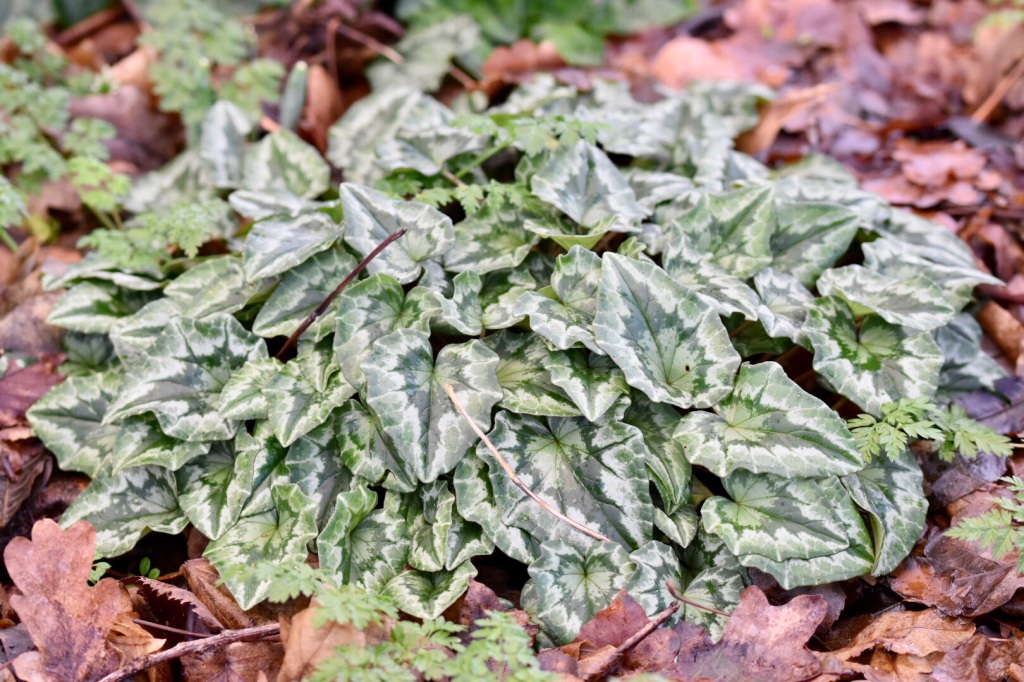
When there are plenty of flowers around, these cyclamen hederifolium barely get a second glance, but in January when everything is bare, the patterns on the leaves draw me in. I love moving from one plant to another comparing the intricate markings. No two plants are the same.
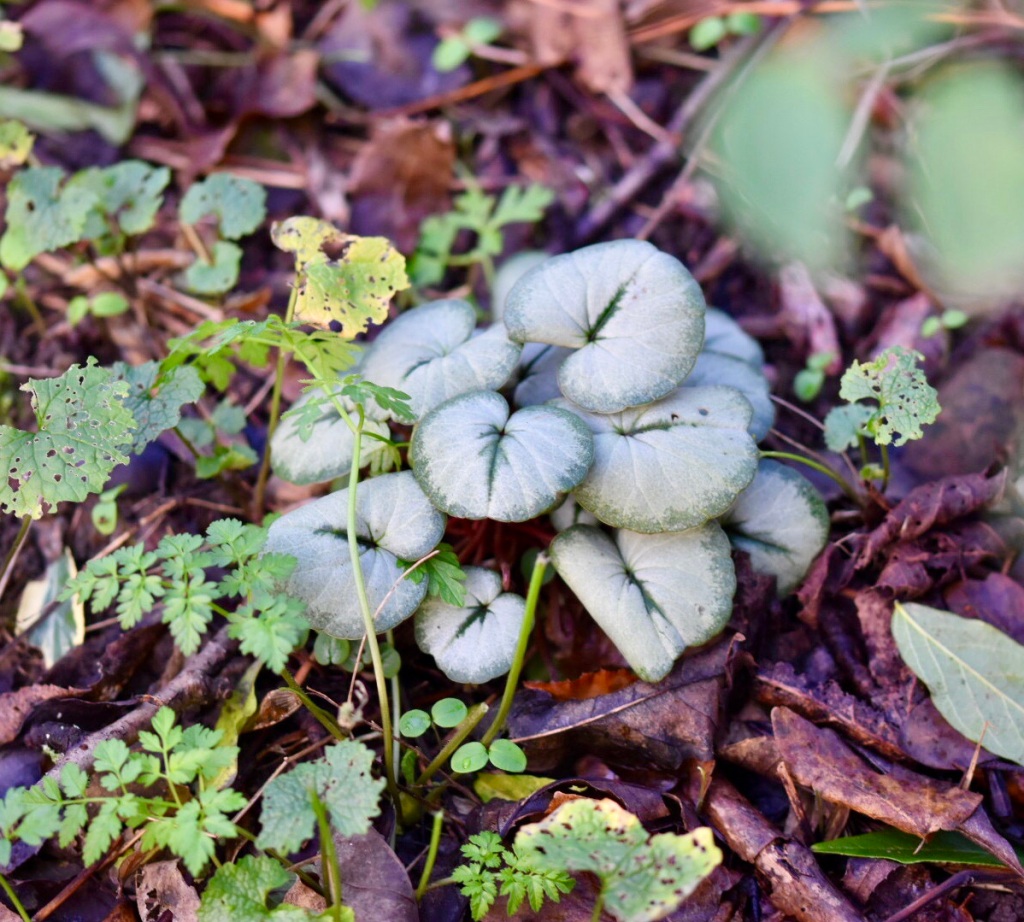
These grey-leaved cyclamen coum shine out in the shade under the ash trees. Soon they will have dainty white or bright pink flowers.

These are just starting to flower and there’s plenty of buds to open. They thrive under deciduous trees, flowering before the leaf canopy emerges.

I found some small brunnera plants. These have blue forget-me-not flowers in spring. They grow in deep shade alongside the cyclamen.
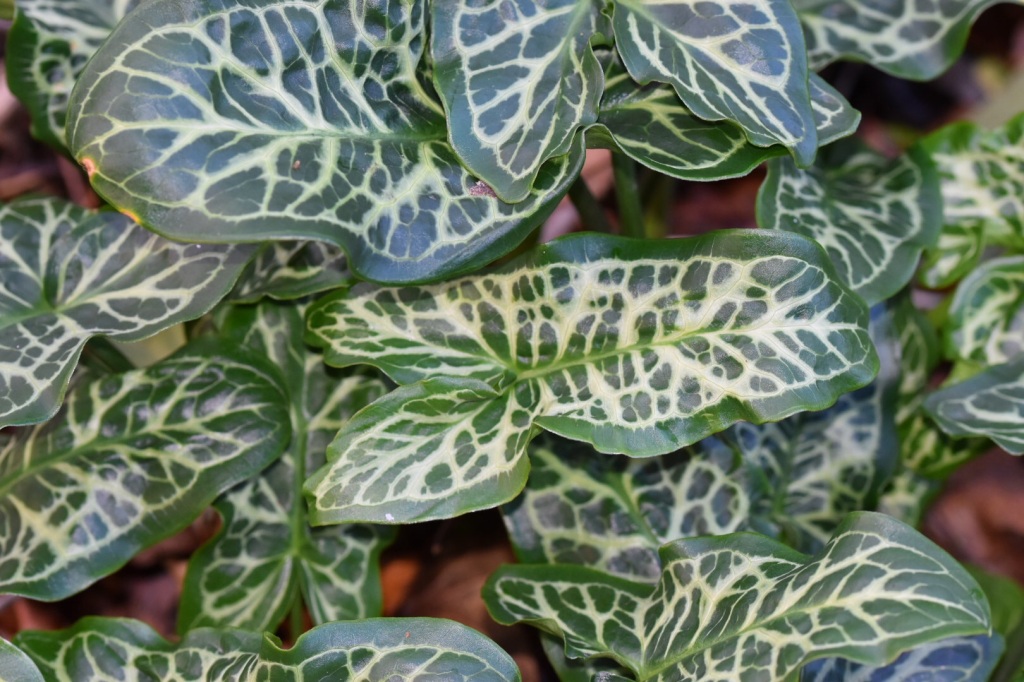
Arum italicum can be a thug, spreading all over the garden. But in deep shade, it is fairly well-behaved. It has bright orange berries and creamy white spathes. Good foliage for jam jar flowers.
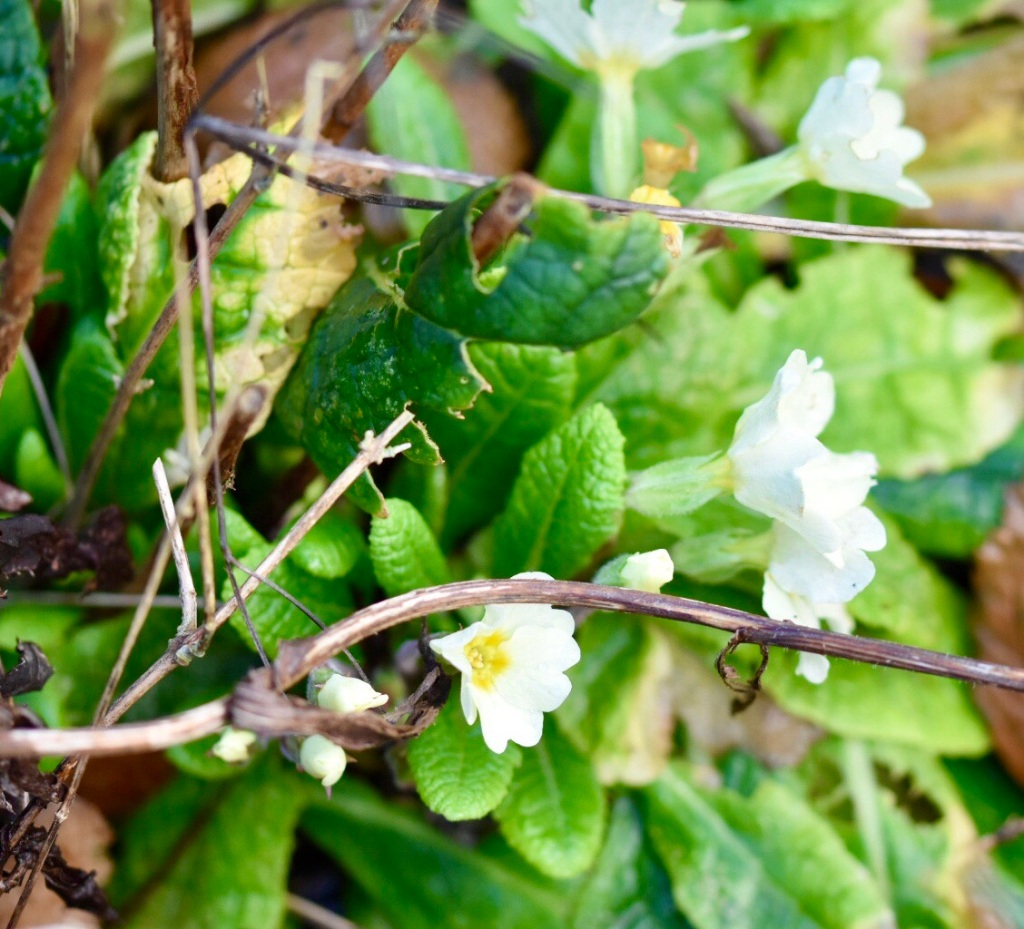
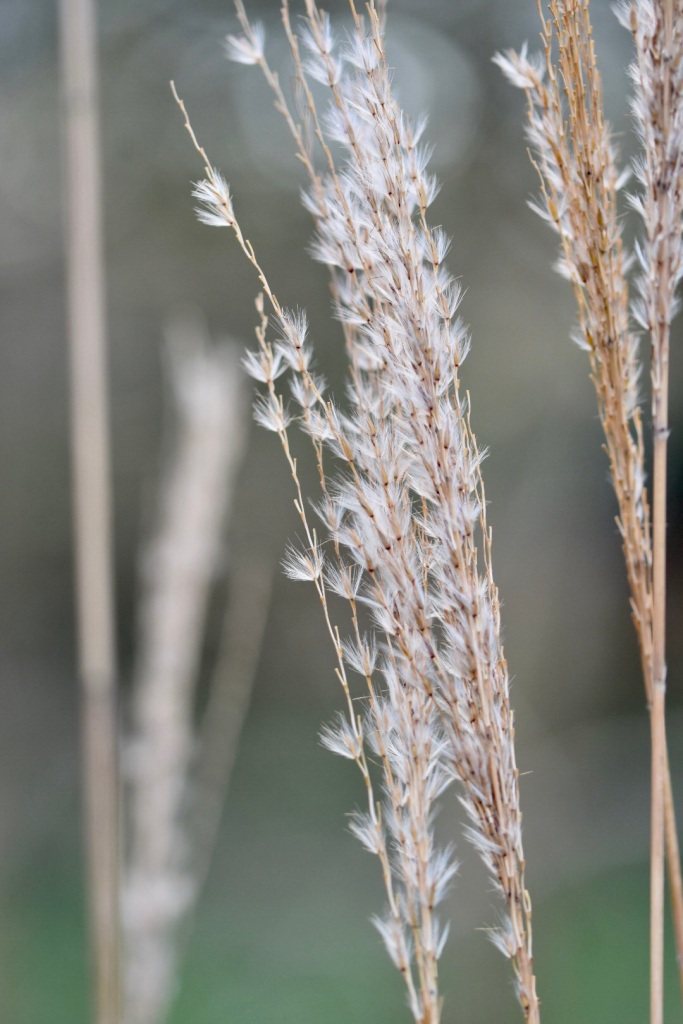
When there’s not much to see, grasses provide a ‘stop and stare’ moment by the pond. These are beautiful all year round, and especially on a windy day.

I’ve never seen eranthis hyemalis flowering so early. Temperatures have been well above average all winter, but it’s also been extremely wet and most of the flower borders are under water again today. 2023 saw the wettest July to December period on record for the UK. Records started in 1890. With the ground already waterlogged, the recent rain has caused massive flooding in our area. The River Trent in Nottinghamshire burst its banks. Homes and businesses have been flooded out. It’s heartbreaking to see so much damage. So I won’t complain about my garden. It will drain away naturally and all will be well. Luckily I’ve taken cuttings of all the salvias and penstemons that are currently waterlogged, so there’s a back up plan if they don’t survive.

Shrugging off the wet weather, hellebores are starting to flower. These came from John Massey’s Ashwood Nursery near Birmingham. Some of these have been under water this week, with just the flower buds bobbing about in the air.
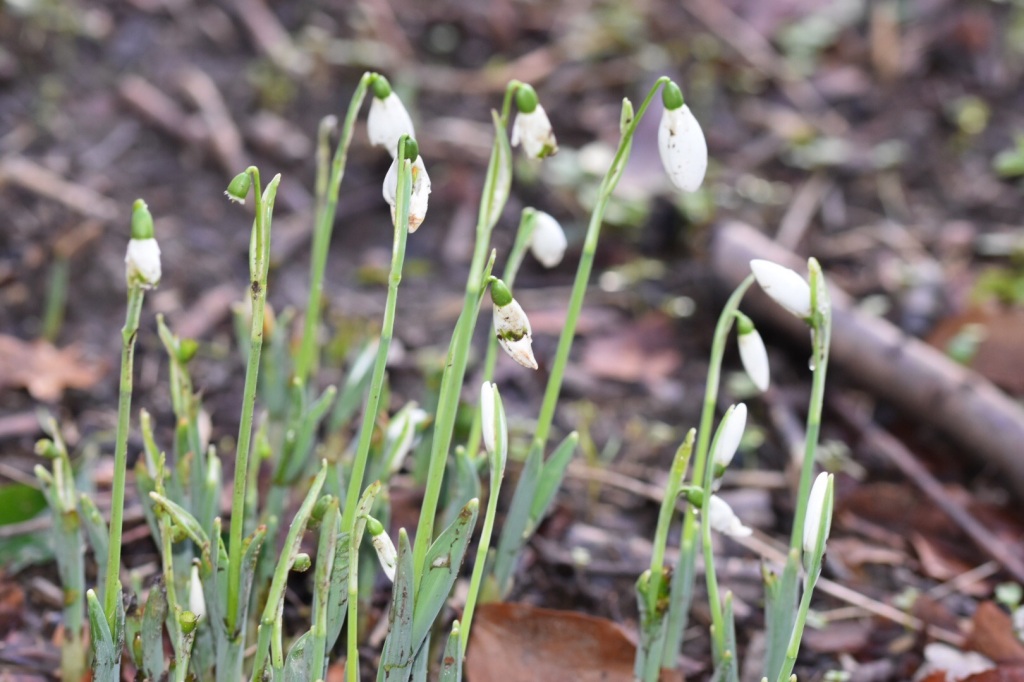
Early flowering snowdrops looking slightly muddy. Mrs Macnamara is a reliable variety and bulks up fairly quickly. Luckily it’s a very tall snowdrop – and as you can see, survives a few days under water. I think we can say it’s definitely robust!

The wildflower patch- now a bog! Luckily the greenhouse and poly tunnel are on higher ground. We have had to check for stranded goldfish as this area is alongside our pond.

Anyway, today there was sunshine. And the top of the willow trees look golden against a bright blue sky. A moment of joy after all that rain. Tiny grey pussy willow buds are starting to show. And there’s catkins on hazel and alder trees.
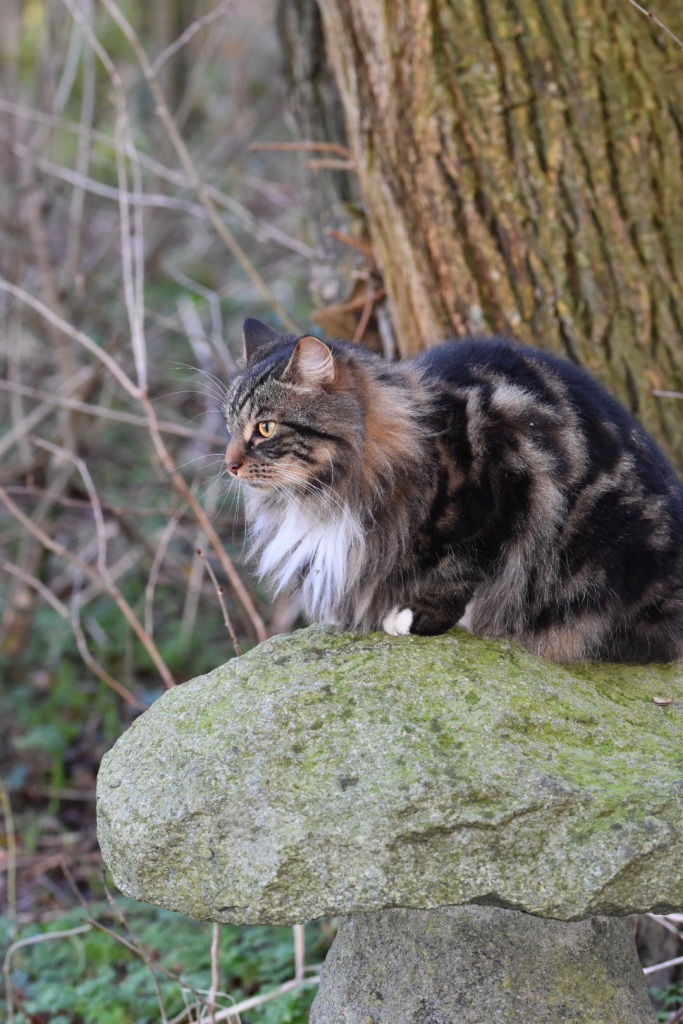
Monty is a good barometer for the weather. He’s been hibernating indoors during the rain. But today he emerged and set upon the straddle stone as a watch-out post, keeping his paws perfectly dry. Now as I write this he’s back in front of the fire, and I’ve checked the weather reports. Snow is forecast!

Snow will look pretty atop these black rudbeckia seed heads. I leave them for natural bird food and structure over winter.

I’ve left the flat sedum heads too. I just can’t call them by their new name. Hylotelephinium sounds like a type of outdated phone rather than an ice plant!

Some feverfew seed heads remain. Nothing spectacular, but I feel like accepting any tiny glimmer of beauty at the moment. It’s a quiet time, and I’m not being too fussy. Just grateful.

Eryngium Miss Willmott’s Ghost, looking more ghostly than usual. Looking closely, I found a ladybird and a lacewing, headfirst, nestled between the seeds. Peacefully may they slumber until spring.
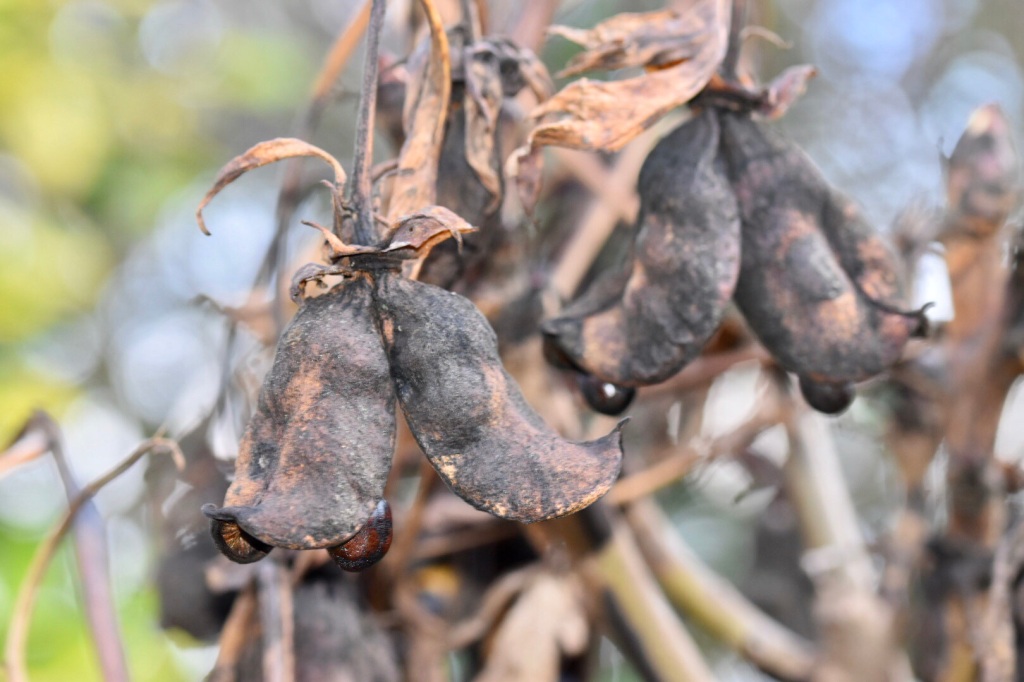
Well, even I admit these are ugly, but there’s a certain something in those dark brown seeds emerging from the peony lutea pods. They glisten like amber in sunshine. Mum grew some plants from these and they flowered for the first time last summer. Seven years after sowing!

Planted underneath, in deep shade, there’s plenty of Skimmia Kew Green. Such a gorgeous scent in spring. Much overlooked in modern planting plans.
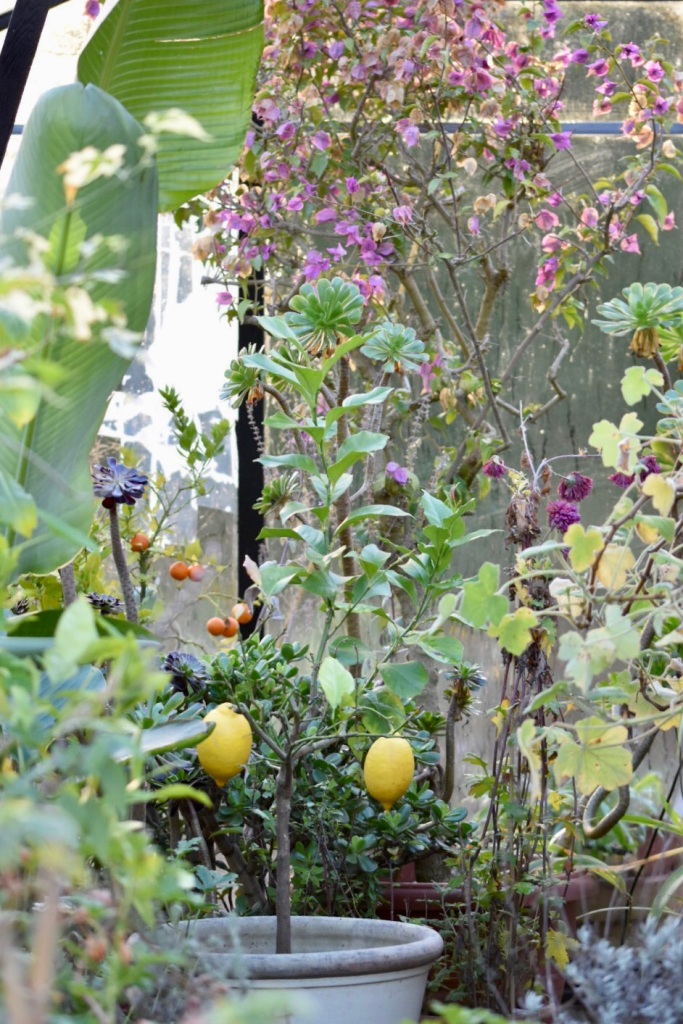
A quick peek in the greenhouse. Always plenty of gorgeously-scented pelargoniums and citrus. Sadly, the big white patch at the end is polythene patching the glass due to storm damage just after Christmas. A big end panel will have to be replaced. And then a careful clear up as there are shards of glass in every plant pot.
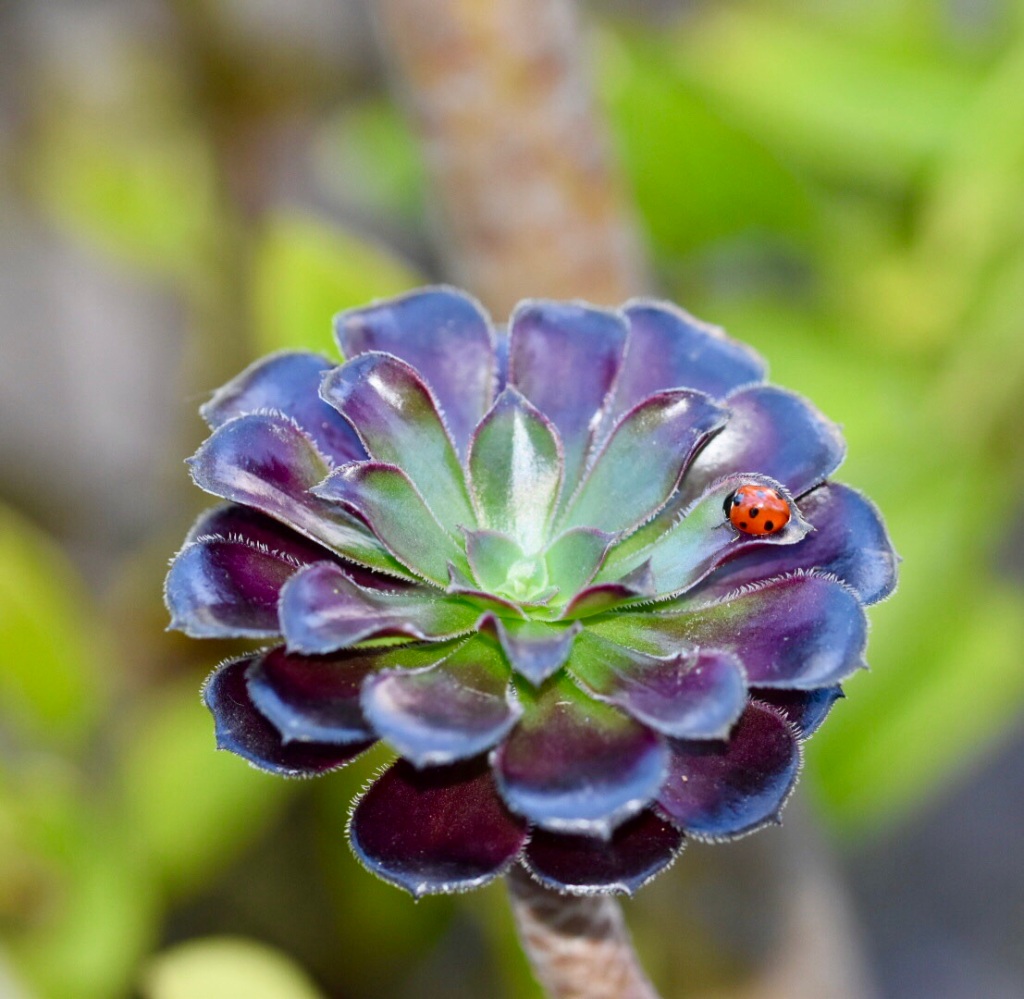
However, still seeking joy – I found a ladybird in an aonium.

And some pretty fuchsia leaves looking healthy in amongst the lemon trees.

A hairy, peppermint-scented pelargonium. To rub these leaves is to be transported.

There’s new shoots. Daffodils for cut flowers soon.
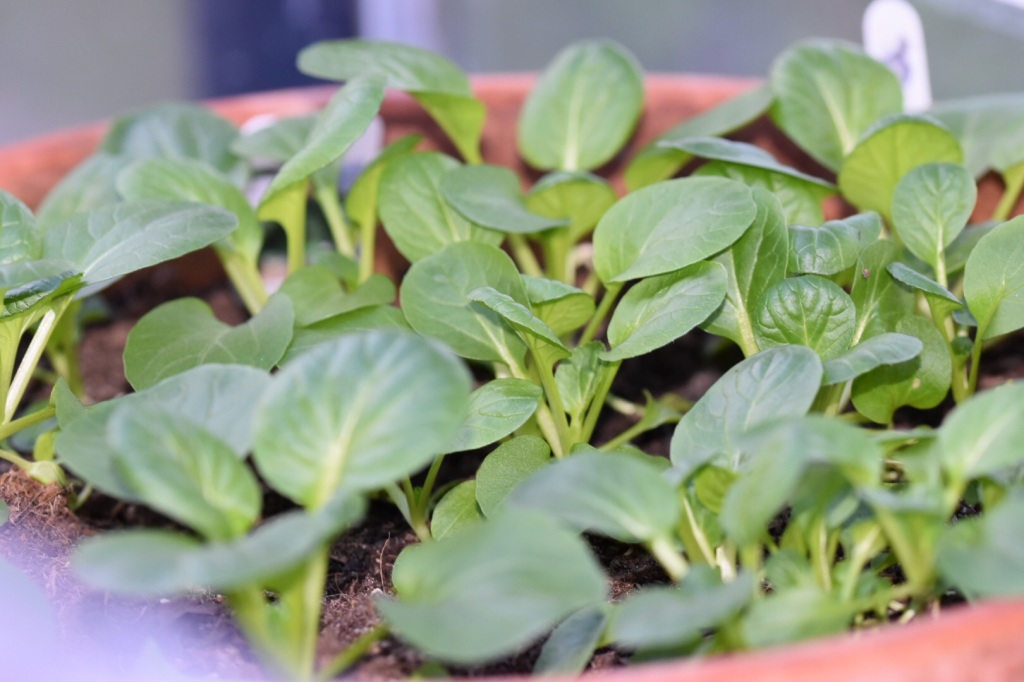
And food. Herbs such as thyme, marjoram, parsley, and micro greens. These are pak choi, sown in October. They can be eaten as tiny leaves now, or left to grow on. I take the leaves from the outsides, and the centre continues to grow.

Hens enjoy the heat in the greenhouse over winter too. They are only bantams, so don’t cause any damage and search out pests most assiduously, particularly vine weevils.
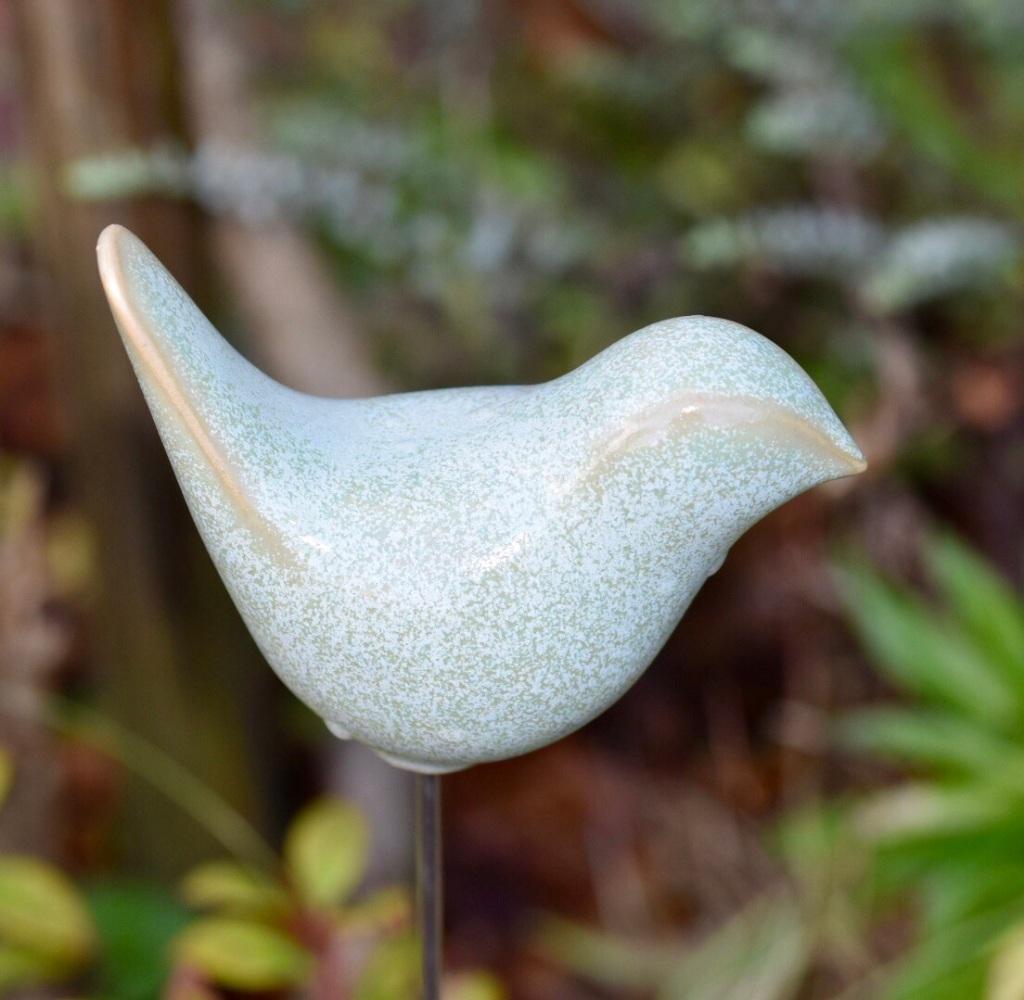
A ceramic bird I couldn’t resist. Bought from The Green Man in Staunton Harold. See my post on a pre-Christmas visit to Calke Abbey and Staunton Harold. Recommended for a day trip.

Thank you for joining me on this ramble around my garden. How has your plot fared in the rain? I hope you didn’t suffer too much damage in the recent storms. I haven’t been able to keep up with the names of the storms, there’s been so many! Please do leave a comment in the box below and sign up for e-mail notifications for new posts. Have a lovely weekend!

